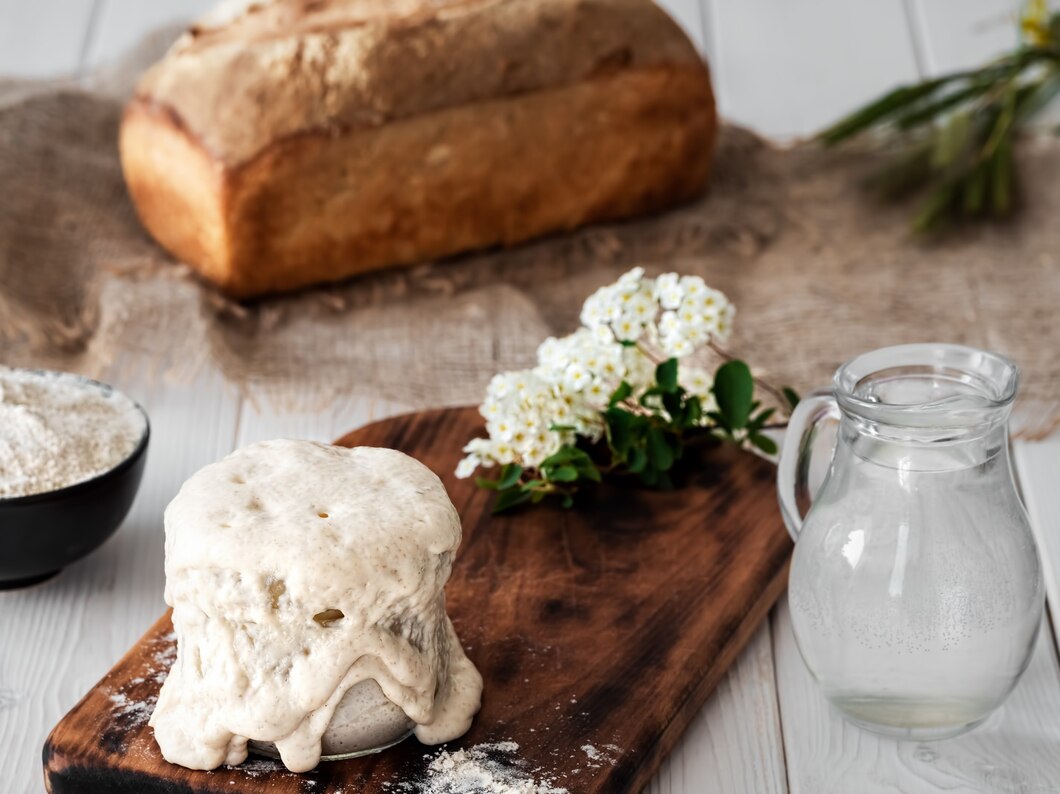Yeast is a common leavening agent used in breadmaking to help dough rise and give bread its airy, fluffy texture. However, there are times when yeast might not be available or suitable for certain dietary needs. Fortunately, there are several effective substitutes you can use to achieve similar results. Here are five foods that can be used as substitutes for yeast in breadmaking.
1. Baking Powder
Baking powder is a versatile and readily available leavening agent that can be used as a substitute for yeast in many bread recipes. It is a combination of an acid (usually cream of tartar) and a base (baking soda), which react when moistened to produce carbon dioxide gas. This gas helps the dough rise and creates a light, airy texture.
How to Use:
- Replace yeast with an equivalent amount of baking powder. For example, if a recipe calls for 1 teaspoon of yeast, use 1 teaspoon of baking powder.
- No proofing time is needed, so baking powder works well for quick breads and other baked goods that don’t require long rising periods.
2. Baking Soda and Acid
Baking soda (sodium bicarbonate) needs an acidic component to produce carbon dioxide for leavening. Common acids used with baking soda include lemon juice, vinegar, or buttermilk. This combination can effectively replace yeast in many recipes.
How to Use:
- Combine 1/2 teaspoon of baking soda with 1 tablespoon of acid (lemon juice, vinegar, or buttermilk) to replace 1 teaspoon of yeast.
- Mix the baking soda and acid into the dry and wet ingredients, respectively, then combine them quickly and bake immediately, as the reaction starts as soon as they are mixed.
3. Sourdough Starter
Sourdough starter is a natural leavening agent made from flour and water that has been fermented by wild yeast and bacteria. It can replace commercial yeast in breadmaking, providing a unique flavor and texture.
How to Use:
- Use 1 cup of active sourdough starter to replace 1 packet (about 2 1/4 teaspoons) of commercial yeast.
- Adjust the recipe by reducing the amount of flour and liquid slightly to account for the starter’s consistency.
- Allow for longer rising times, as sourdough rises more slowly than commercial yeast.
4. Beer
Beer contains natural carbonation and yeast, making it a suitable substitute for yeast in breadmaking. The beer can help the dough rise and add a subtle, malty flavor to the bread.
How to Use:
- Replace some or all of the liquid in your bread recipe with beer. For example, if a recipe calls for 1 cup of water, use 1 cup of beer instead.
- Combine with other leavening agents like baking powder or baking soda for additional lift, as beer alone may not provide sufficient rising power for all bread recipes.
5. Egg Whites
Egg whites can act as a leavening agent by trapping air and creating a light, fluffy texture in baked goods. While not a direct substitute for yeast, they can be used in certain bread recipes, especially quick breads.
How to Use:
- Beat egg whites until they form stiff peaks, then gently fold them into the dough or batter.
- Use 2 egg whites to replace 1 teaspoon of yeast.
- Be careful not to overmix, as this can deflate the egg whites and reduce their leavening effect.
Whether you’re out of yeast or looking for a yeast-free option, these substitutes can help you continue baking delicious bread. Each alternative brings its own unique qualities to the table, so feel free to experiment and find the one that works best for your recipe and preferences. Happy baking!








